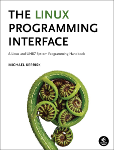|
HTML rendering created 2025-09-06 by Michael Kerrisk, author of The Linux Programming Interface. For details of in-depth Linux/UNIX system programming training courses that I teach, look here. Hosting by jambit GmbH. |

|
|
NAME | DESCRIPTION | EXAMPLES | SEE ALSO | AUTHOR | COLOPHON |
|
|
|
SEPERMIT.CONF(5) Linux-PAM Manual SEPERMIT.CONF(5)
sepermit.conf - configuration file for the pam_sepermit module
The lines of the configuration file have the following syntax:
<user>[:<option>:<option>...]
The user can be specified in the following manner:
• a username
• a groupname, with @group syntax. This should not be confused
with netgroups.
• a SELinux user name with %seuser syntax.
The recognized options are:
exclusive
Only single login session will be allowed for the user and the
user's processes will be killed on logout.
ignore
The module will never return PAM_SUCCESS status for the user.
It will return PAM_IGNORE if SELinux is in the enforcing mode,
and PAM_AUTH_ERR otherwise. It is useful if you want to
support passwordless guest users and other confined users with
passwords simultaneously.
The lines which start with # character are comments and are
ignored.
These are some example lines which might be specified in
/etc/security/sepermit.conf.
%guest_u:exclusive
%staff_u:ignore
%user_u:ignore
pam_sepermit(8), pam.d(5), pam(8), selinux(8),
pam_sepermit and this manual page were written by Tomas Mraz
<tmraz@redhat.com>
This page is part of the linux-pam (Pluggable Authentication
Modules for Linux) project. Information about the project can be
found at ⟨http://www.linux-pam.org/⟩. If you have a bug report
for this manual page, see ⟨//www.linux-pam.org/⟩. This page was
obtained from the project's upstream Git repository
⟨https://github.com/linux-pam/linux-pam.git⟩ on 2023-12-22. (At
that time, the date of the most recent commit that was found in
the repository was 2023-12-18.) If you discover any rendering
problems in this HTML version of the page, or you believe there is
a better or more up-to-date source for the page, or you have
corrections or improvements to the information in this COLOPHON
(which is not part of the original manual page), send a mail to
man-pages@man7.org
Linux-PAM Manual 12/22/2023 SEPERMIT.CONF(5)
Pages that refer to this page: pam_sepermit(8)